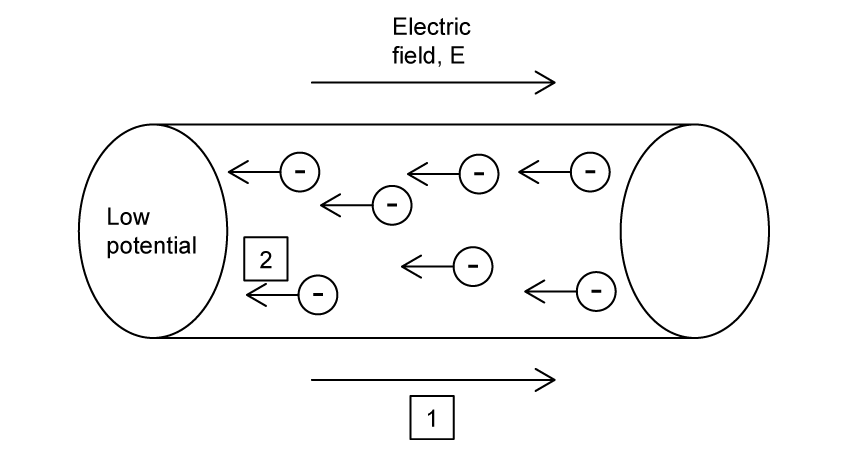Question 1
Identify the unit defined as 'the charge carried by an electric current of one ampere in one second'.
Current.
Potential difference.
Coulomb.
Ampere.
Identify the unit defined as 'the charge carried by an electric current of one ampere in one second'.
Current.
Potential difference.
Coulomb.
Ampere.
Two different equations can be used to calculate the same physical quantity, x.
and
What quantity is represented by x?
Drift velocity.
Current.
Charge on a charge carrier.
Potential difference.
Select the correct quantity and unit for this definition;
'the rate of flow of electric charge past a cross-section of material'
| Quantity | Unit | |
| A. | charge | coulomb |
| B. | charge | ampere |
| C. | current | coulomb |
| D. | current | ampere |
An electric field is a region of space in which an electric charge is subjected to a force. Electric fields can be represented with vector diagrams showing the direction of force around a point charge.
Select the pair of diagrams which correctly represent the field lines around a positive and negative charge.




The diagram shows charged particles moving in a metallic material. Choose the line which correctly identifies the missing labels.

| 1 | 2 | |
| A. | current | electric current |
| B. | voltage | drift speed |
| C. | voltage | electric current |
| D. | current | drift speed |
Which of the following is a possible drift speed for delocalised electrons in a copper wire?
12 × 10−8 m s−1
4.5 × 10−4 m s−1
8.6 m s−1
3.0 × 108 m s−1
Which statement correctly describes a property of the drift velocity, v.
v is indirectly proportional to current, I
v is directly proportional the to charge carrier density, n
v is directly proportional to current, I
v is directly proportional the to cross-sectional area of the conductor, A
Determine the energy of 4 eV in Joules.
6.4 × 10−19 J
6.4 × 10−13 J
6.4 J
2.1 J
Identify the electrical item most likely to use direct current.
Washing machine.
Laptop.
Reading lamp.
Kettle.

For electric field strength, identify the correct equation and description of the diagram.
| Equation | Description | |
| A. | The strength of the electric field is proportional to the number of lines per unit cross-sectional area | |
| B. | The strength of the electric field is indirectly proportional to the number of lines per unit cross-sectional area | |
| C. | The strength of the electric field is proportional to the number of lines per unit cross-sectional area | |
| D. | The strength of the electric field is indirectly proportional to the number of lines per unit cross-sectional area |